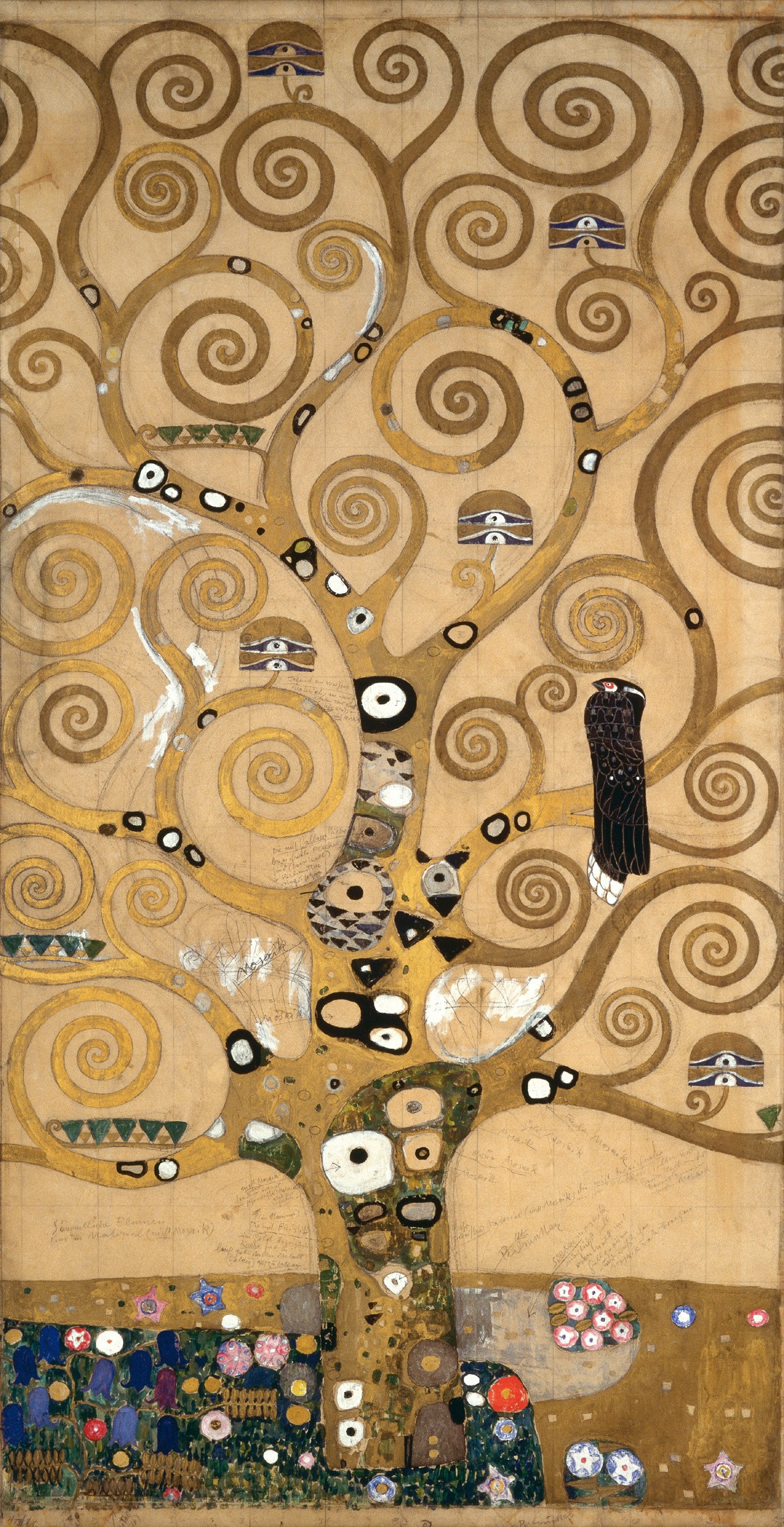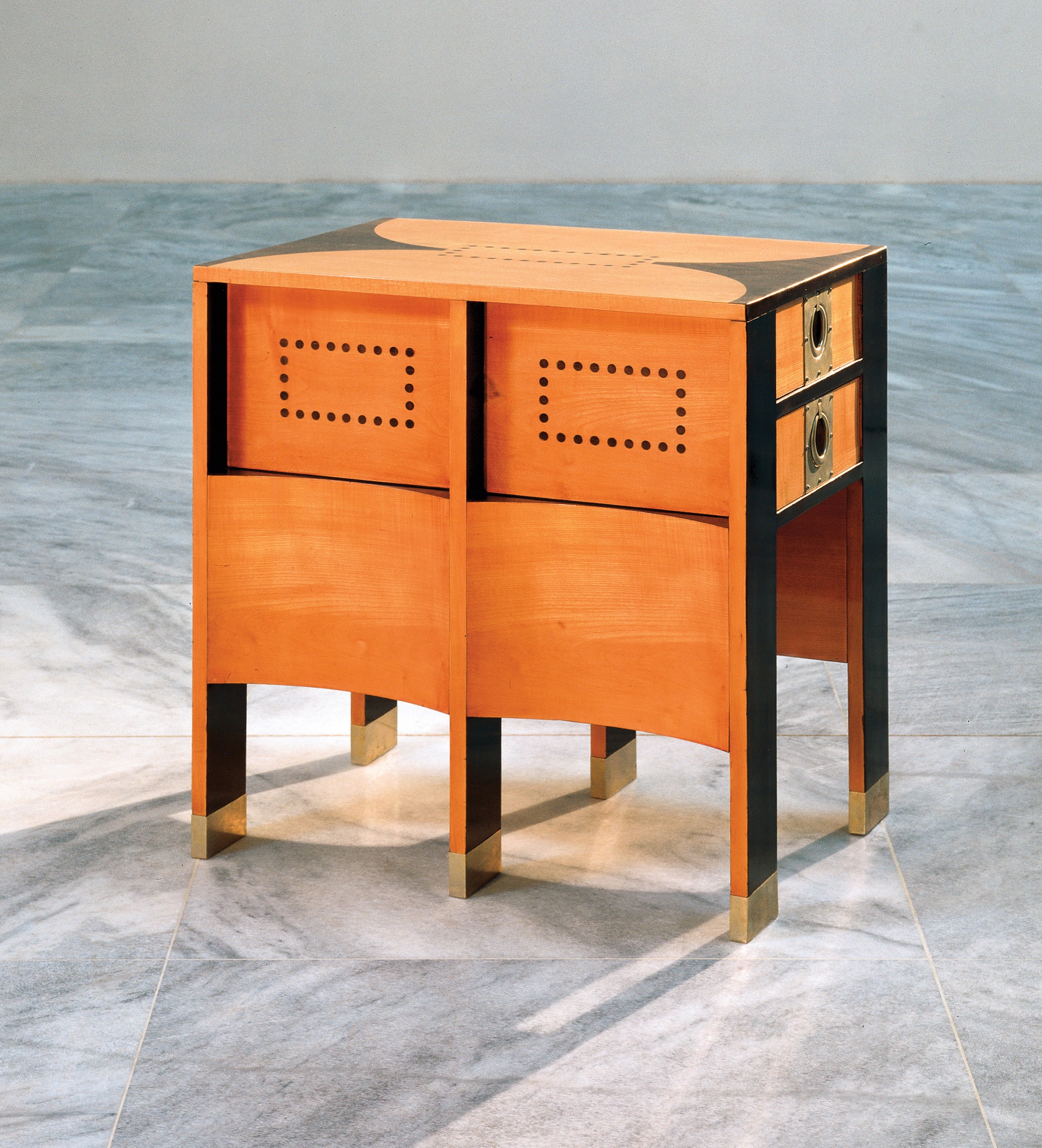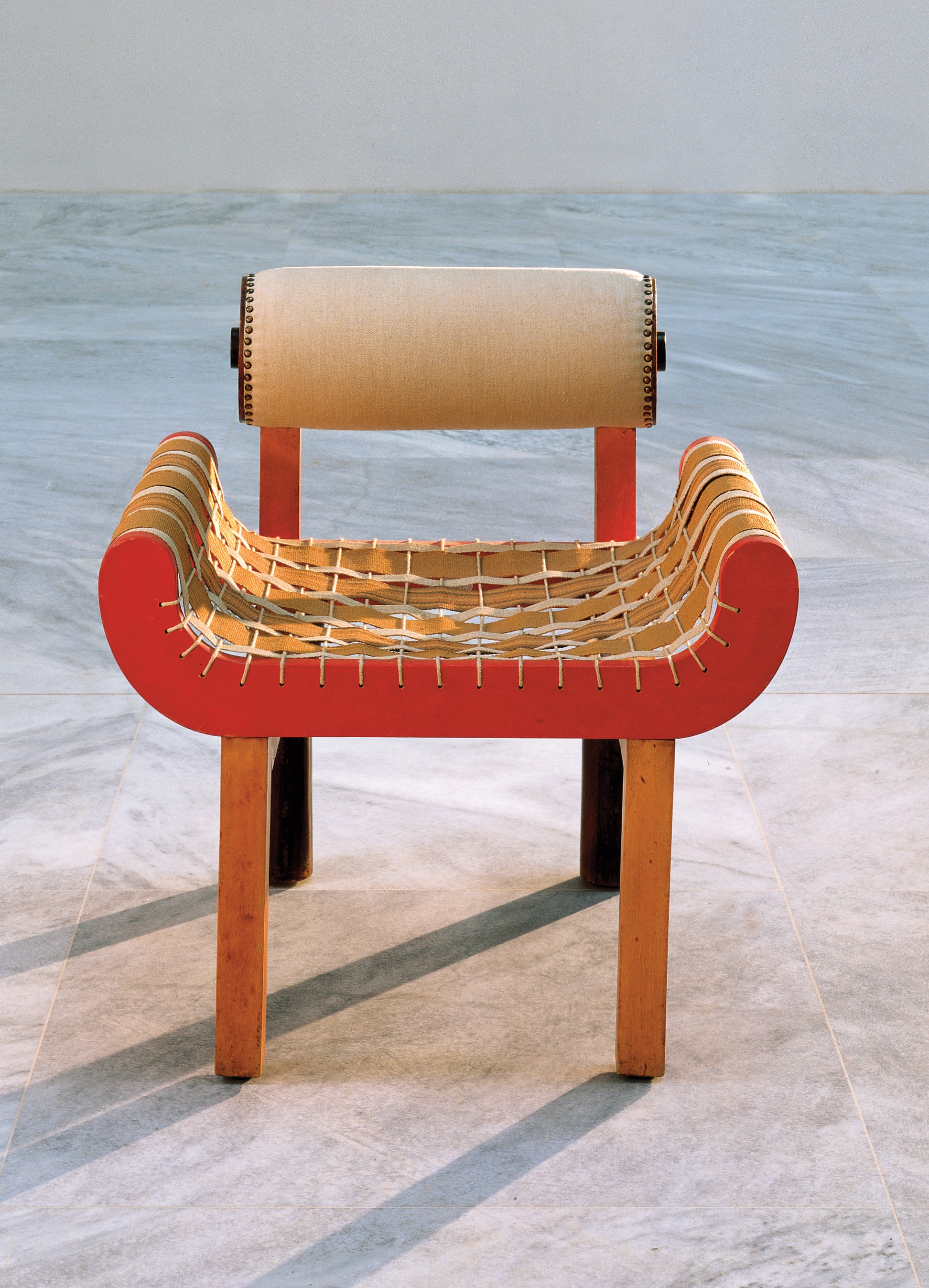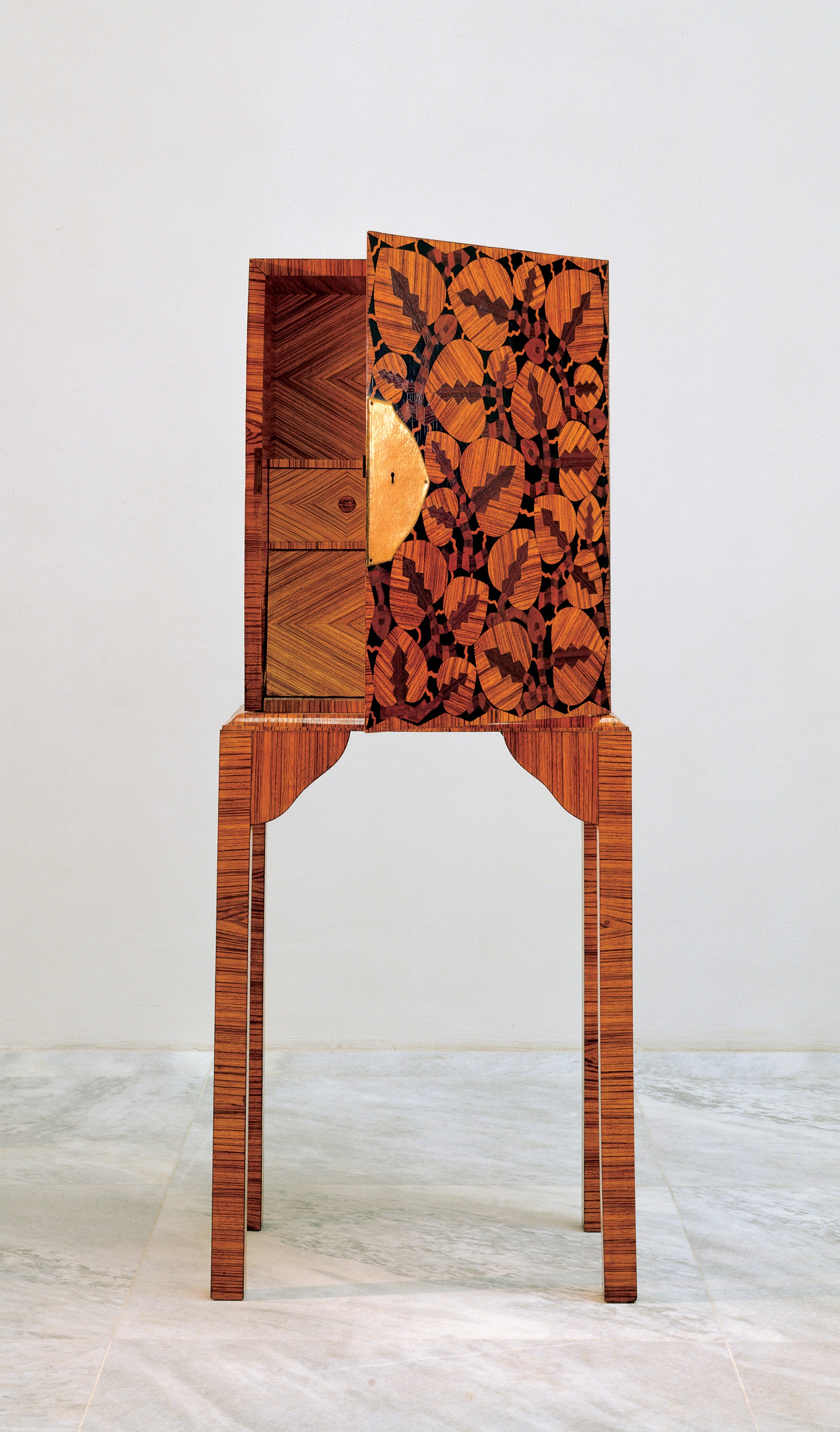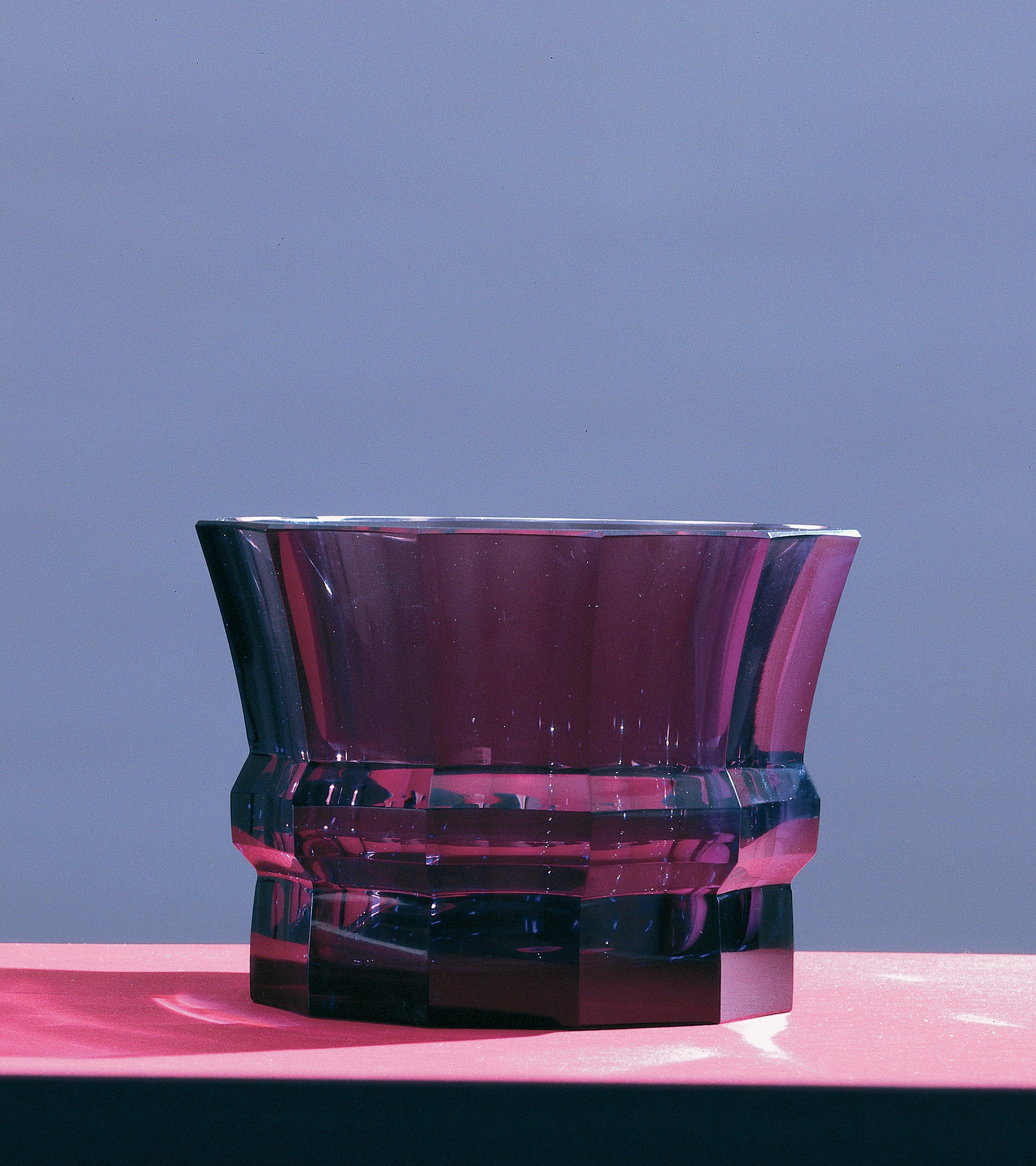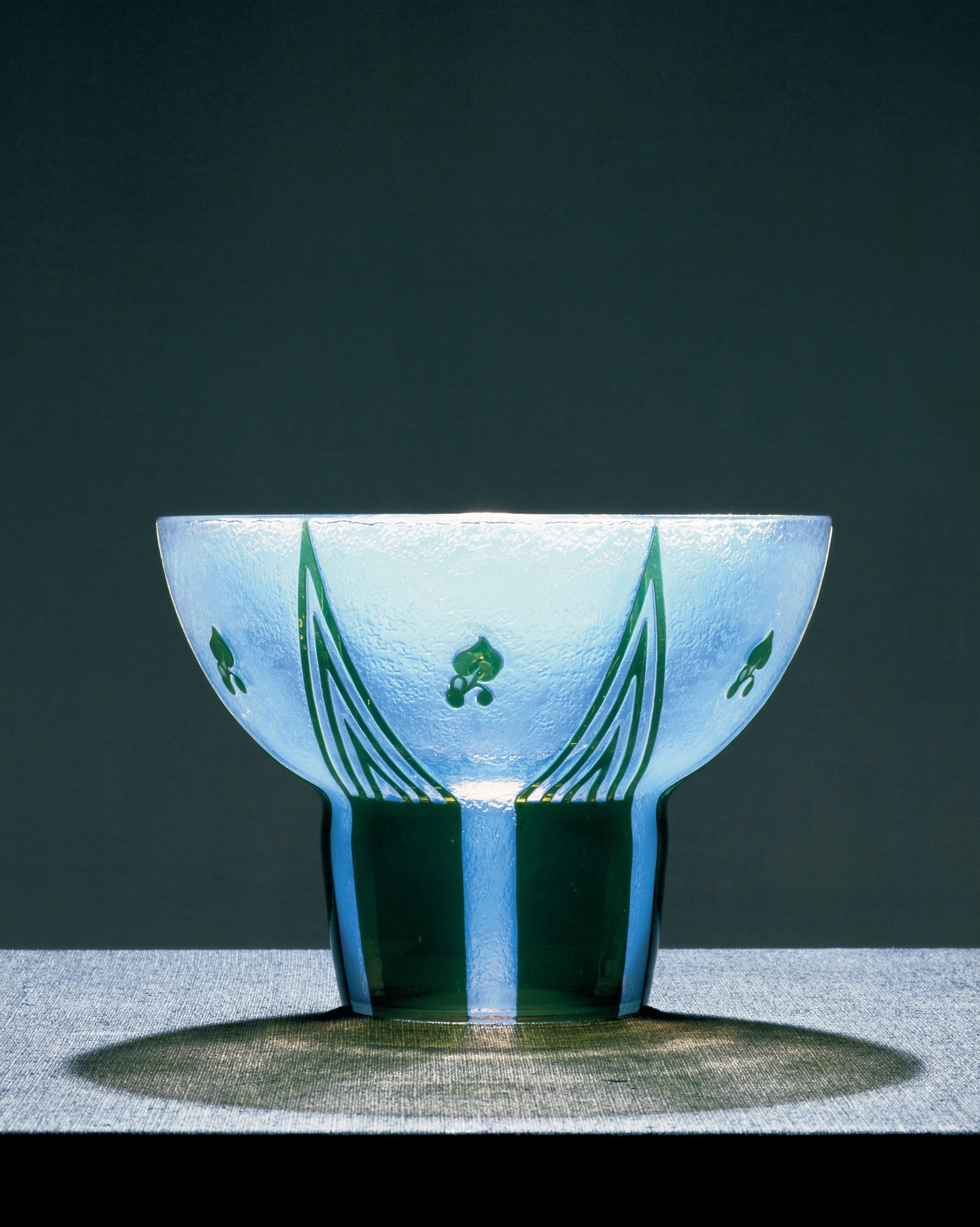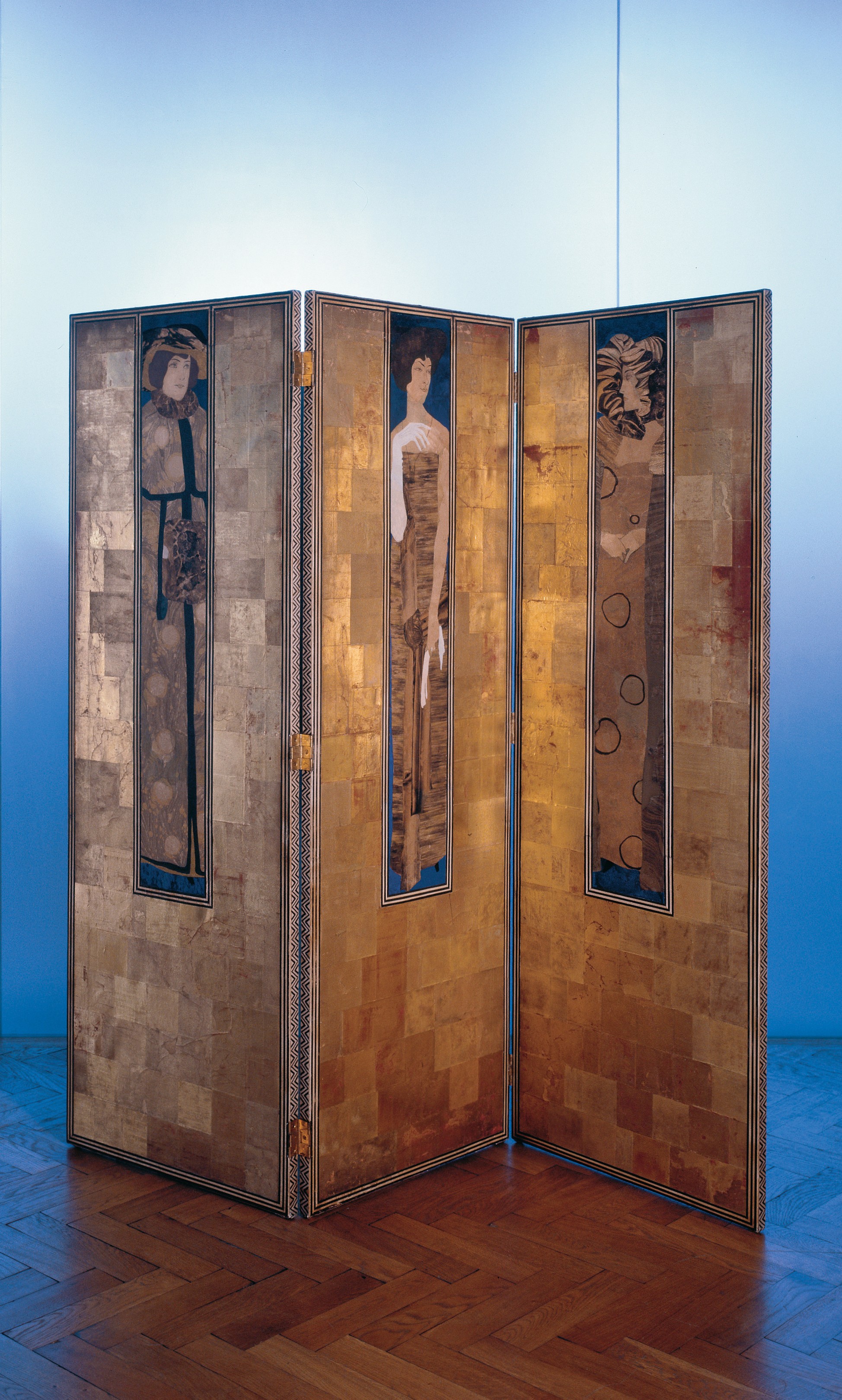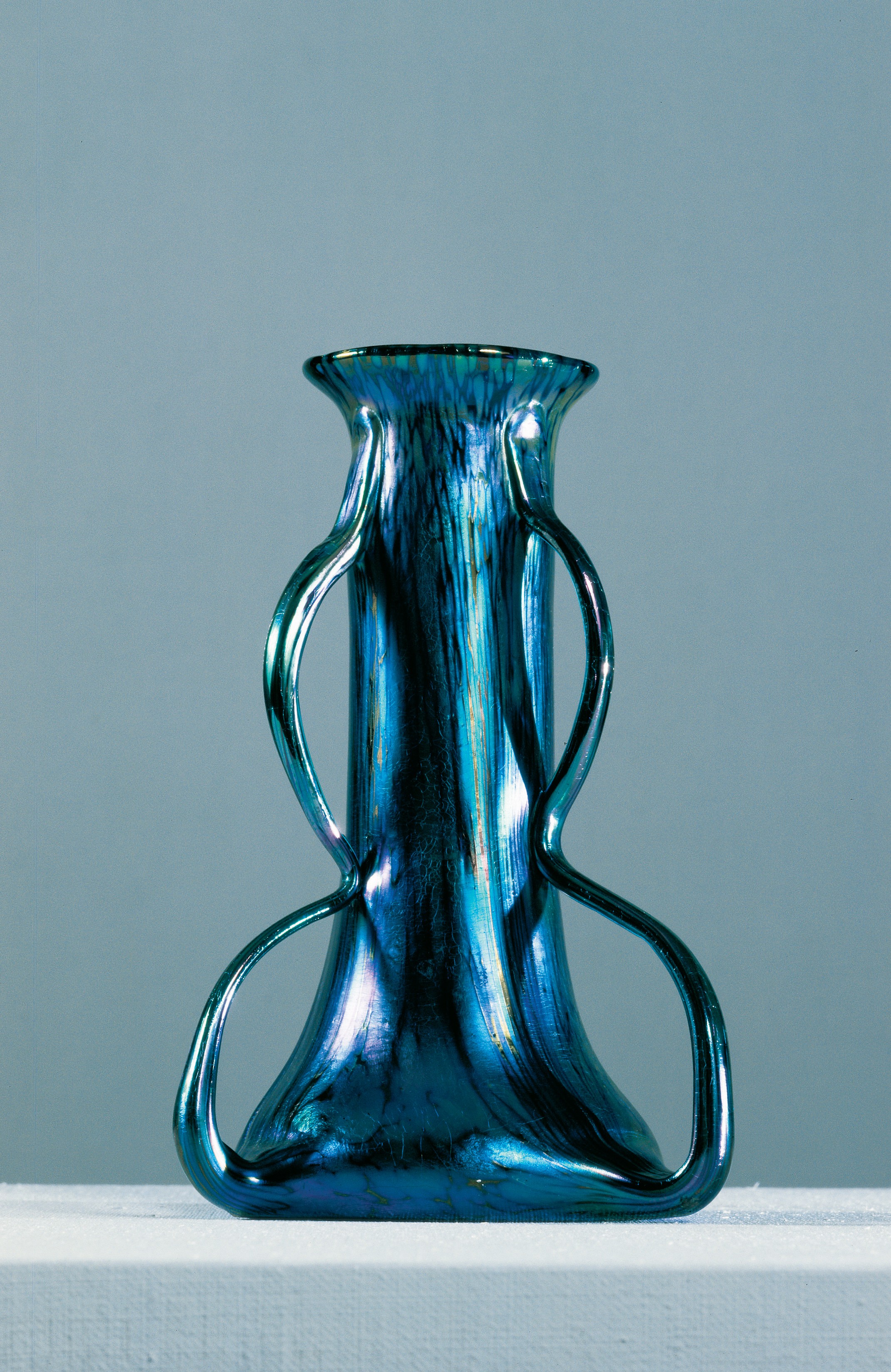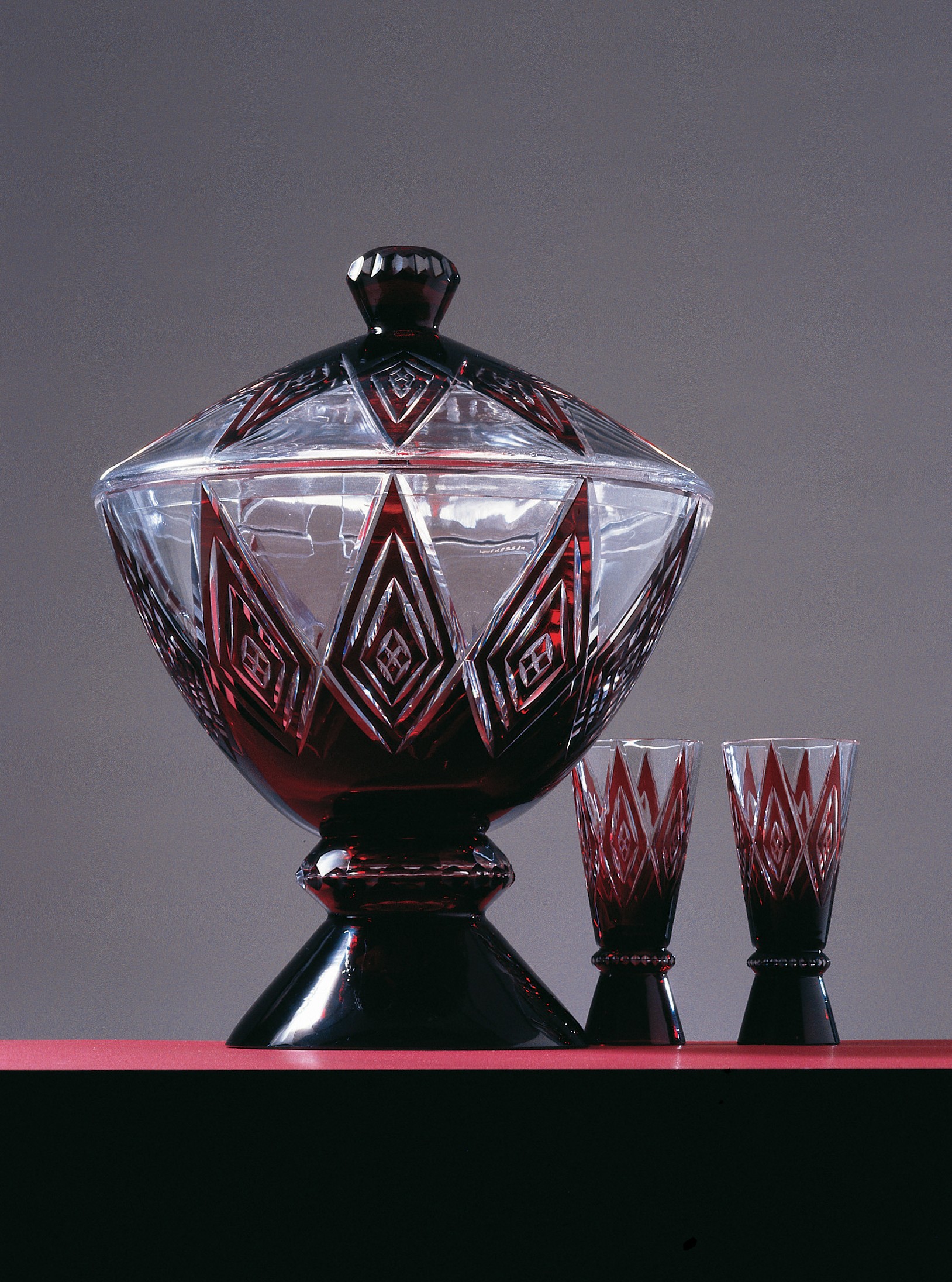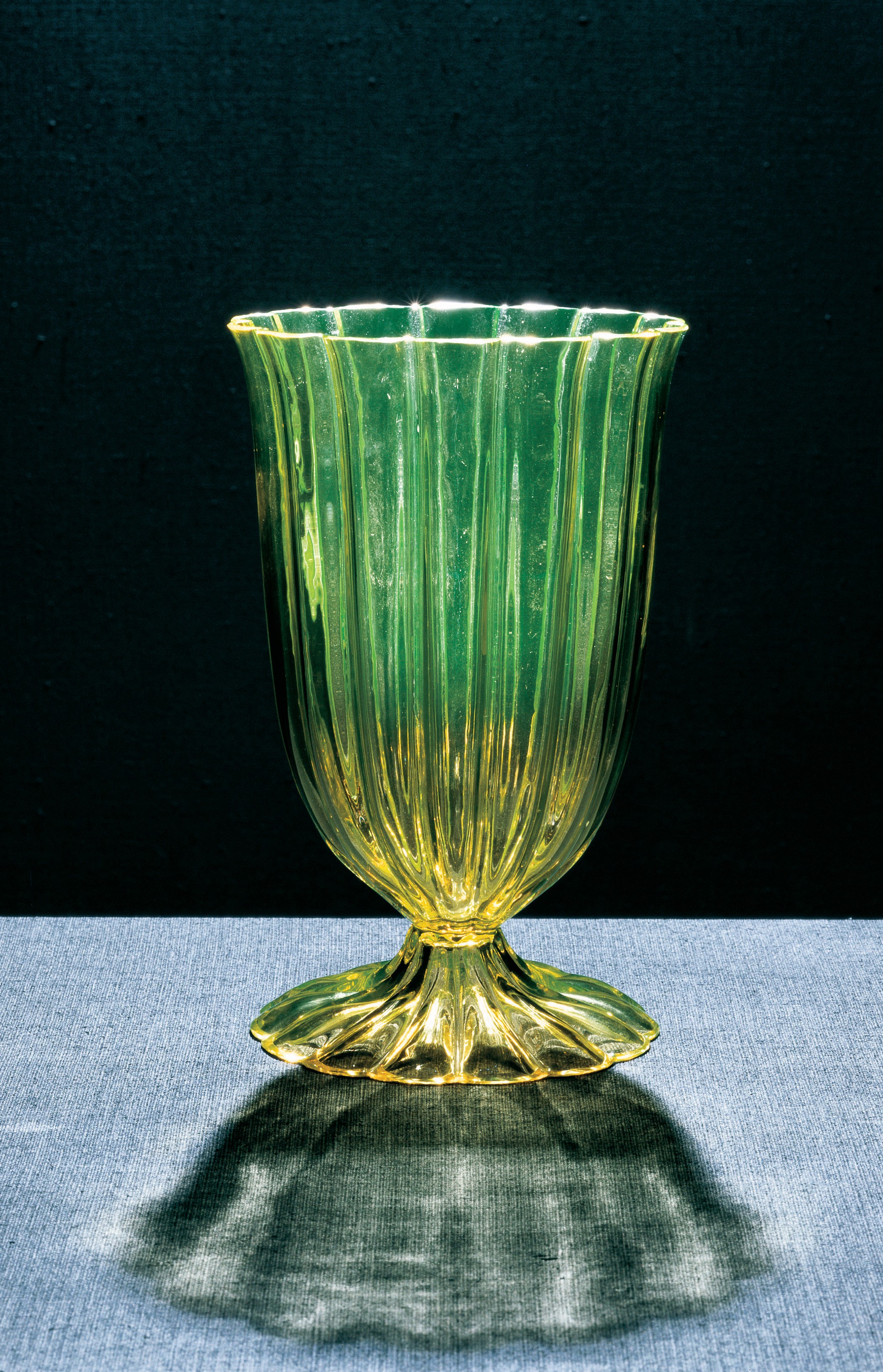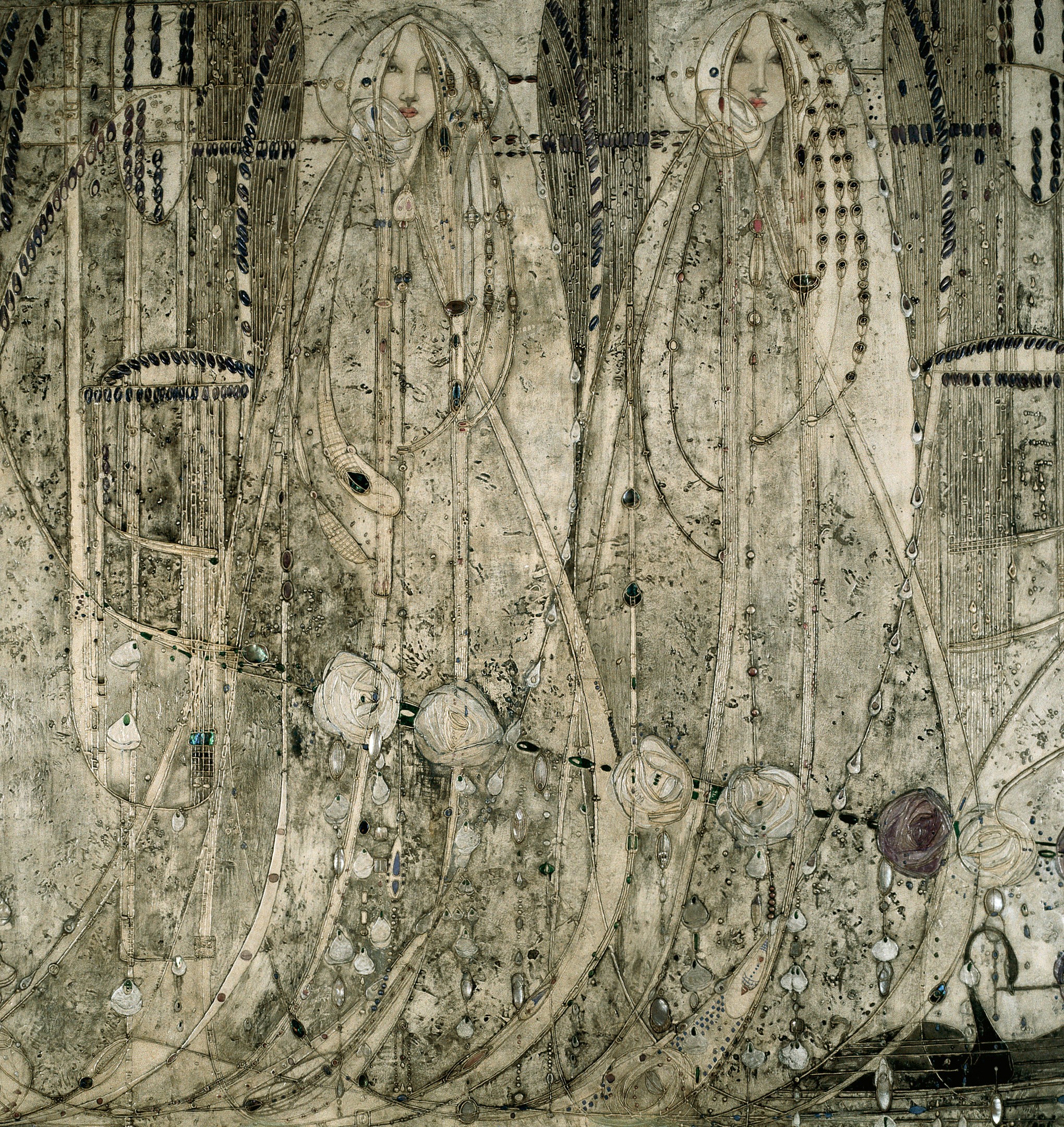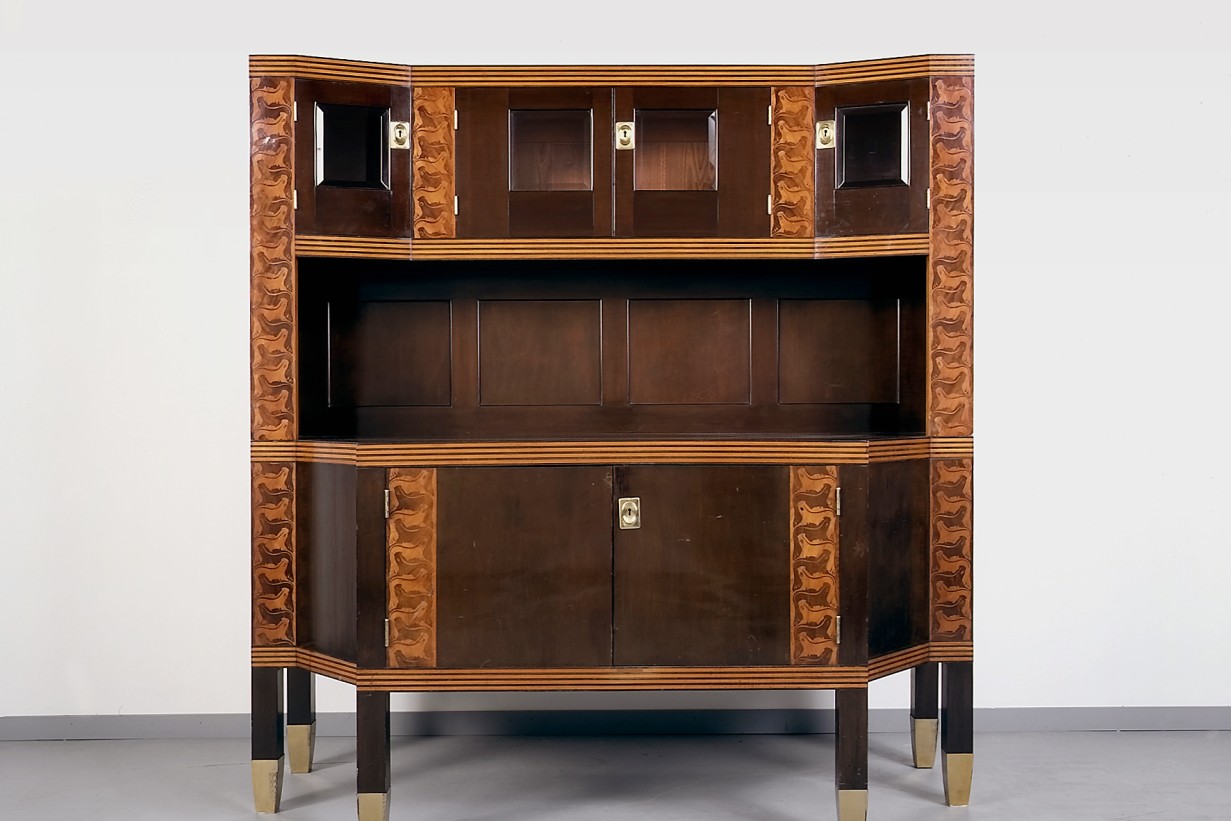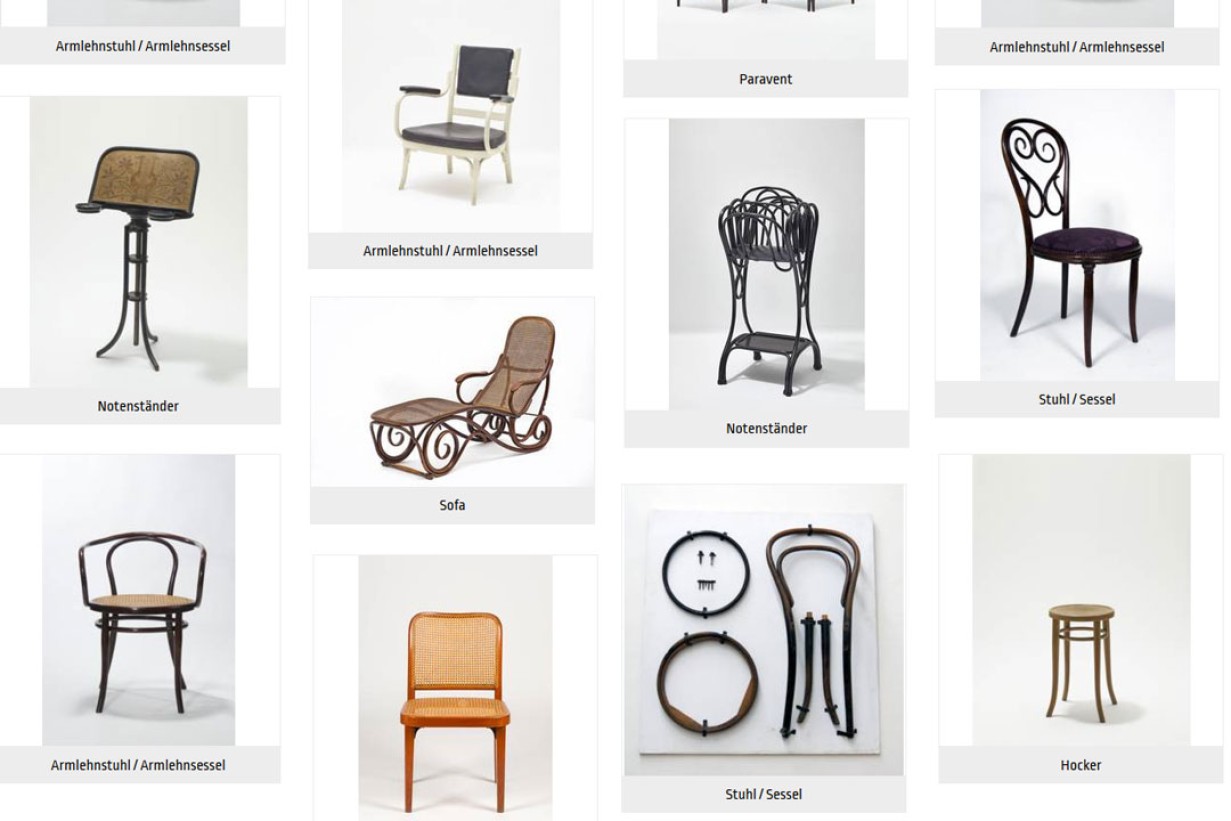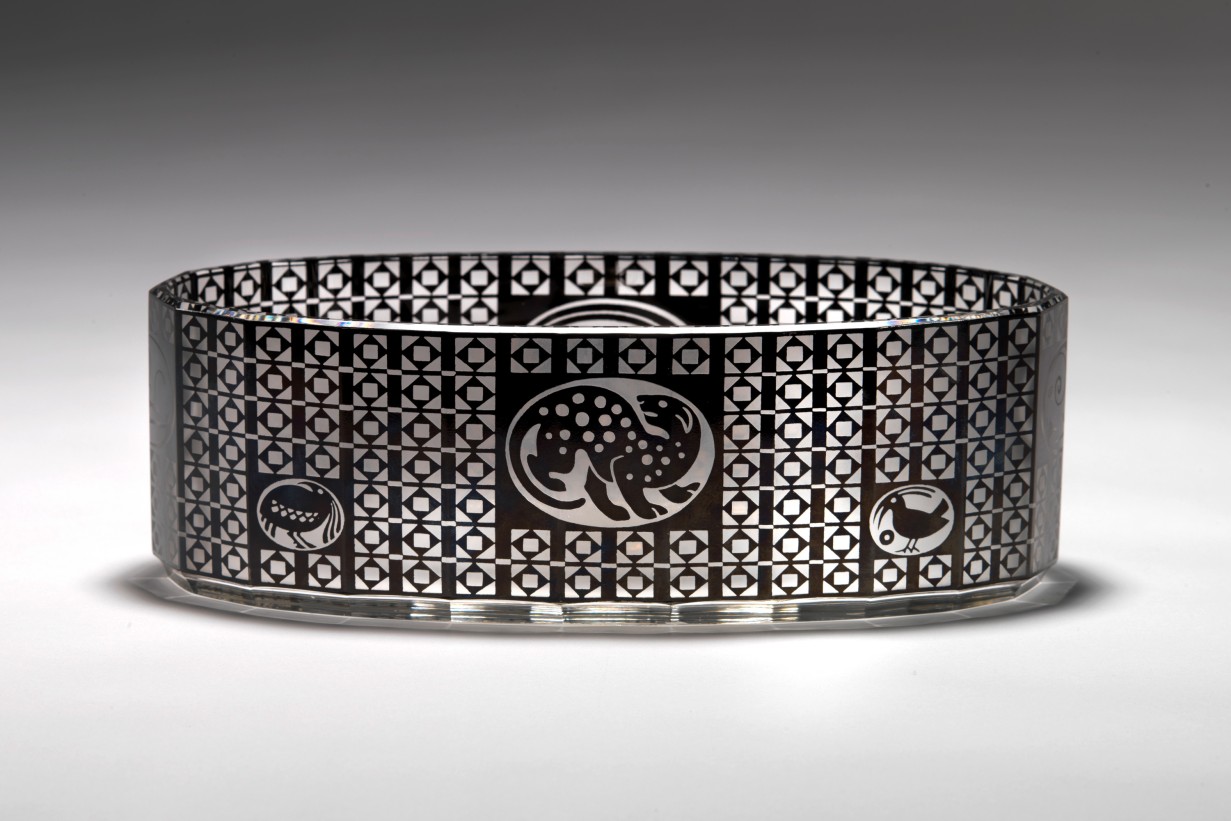
Permanent Collection Art Nouveau Art Deco
Designing artists: Eichinger oder Knechtl

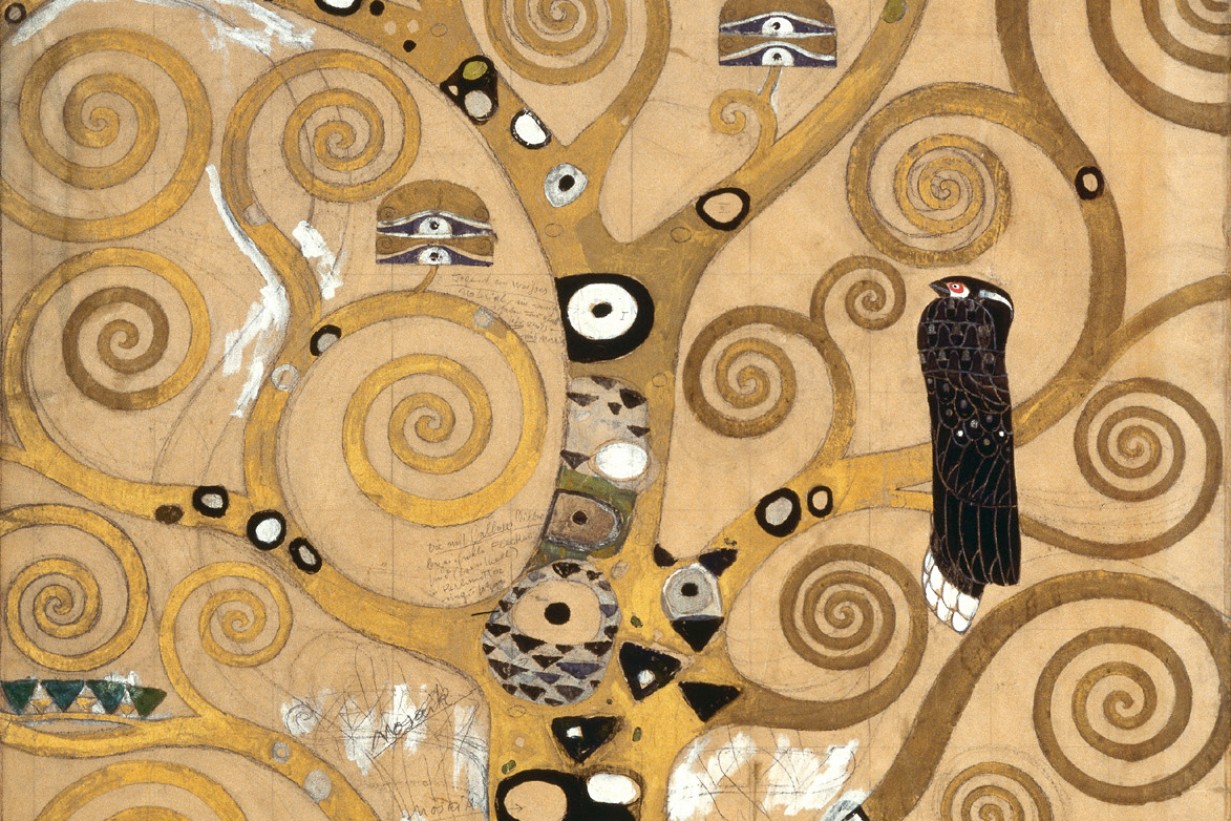


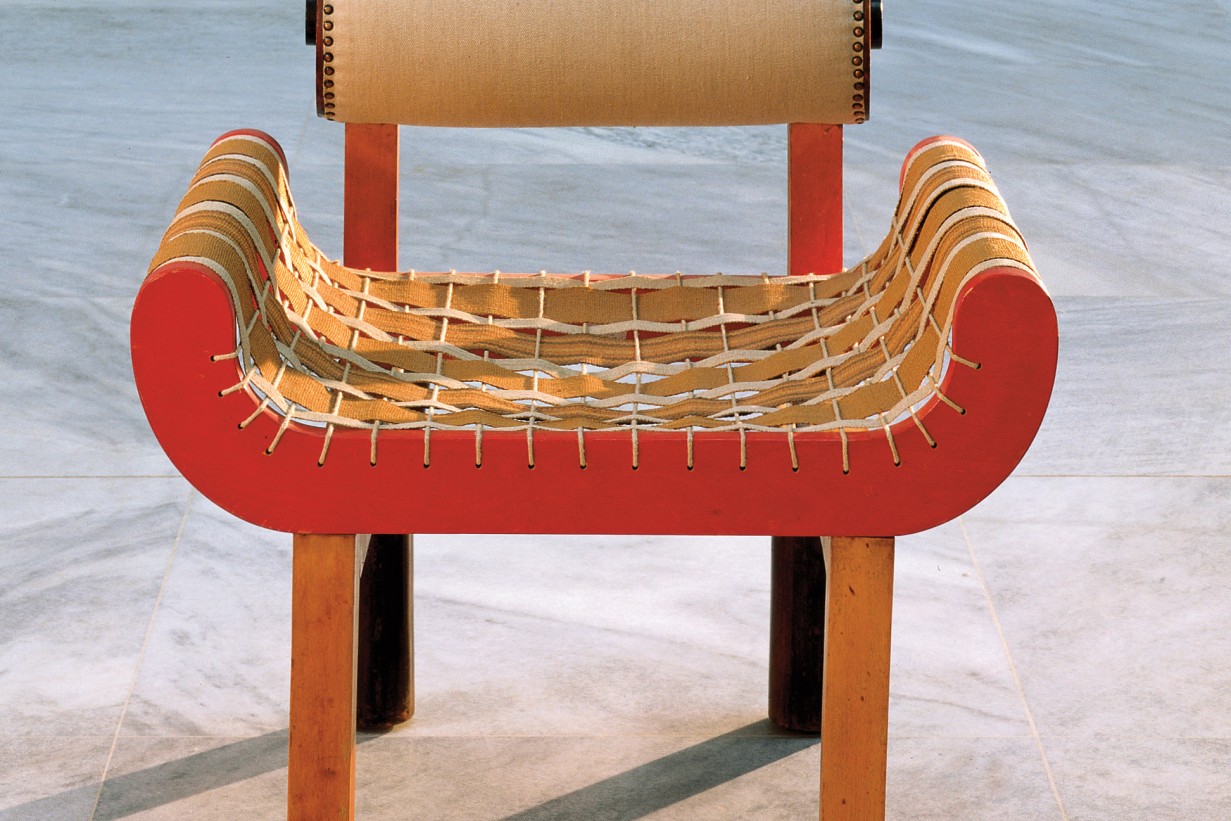
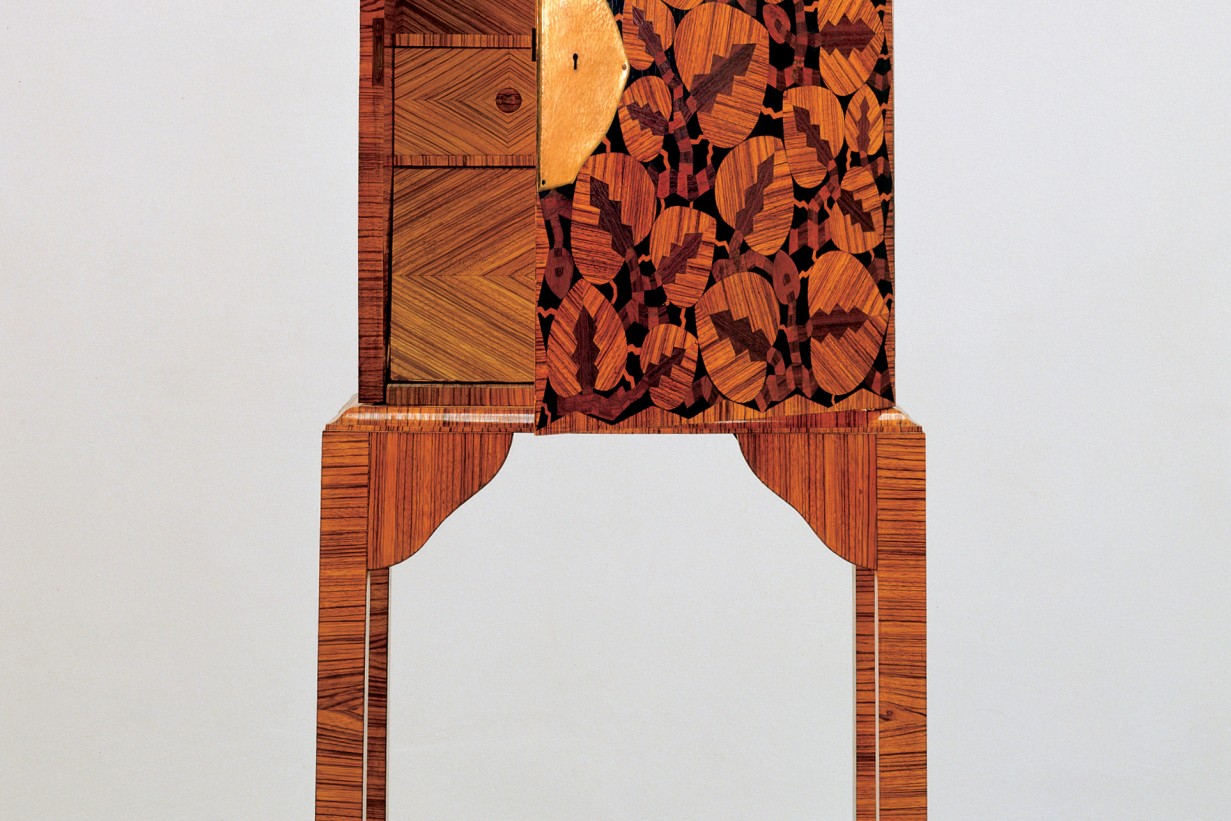
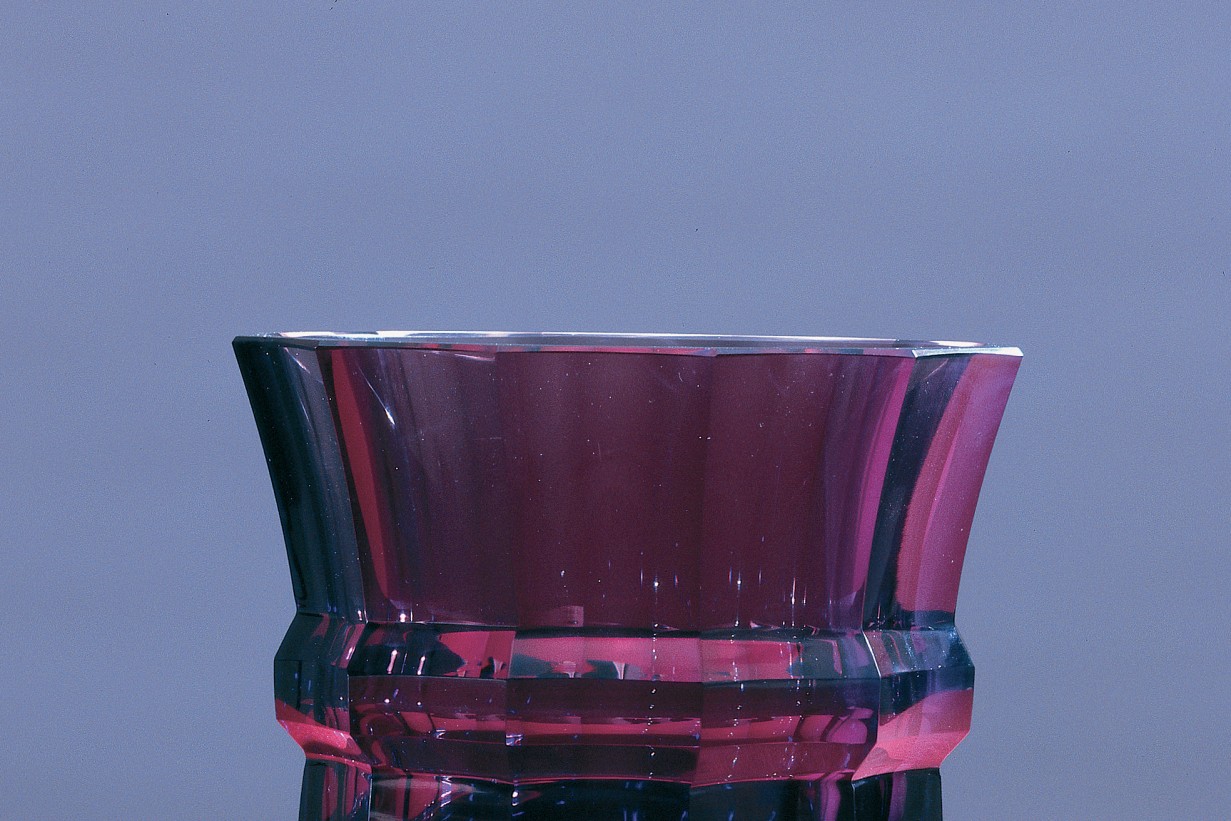
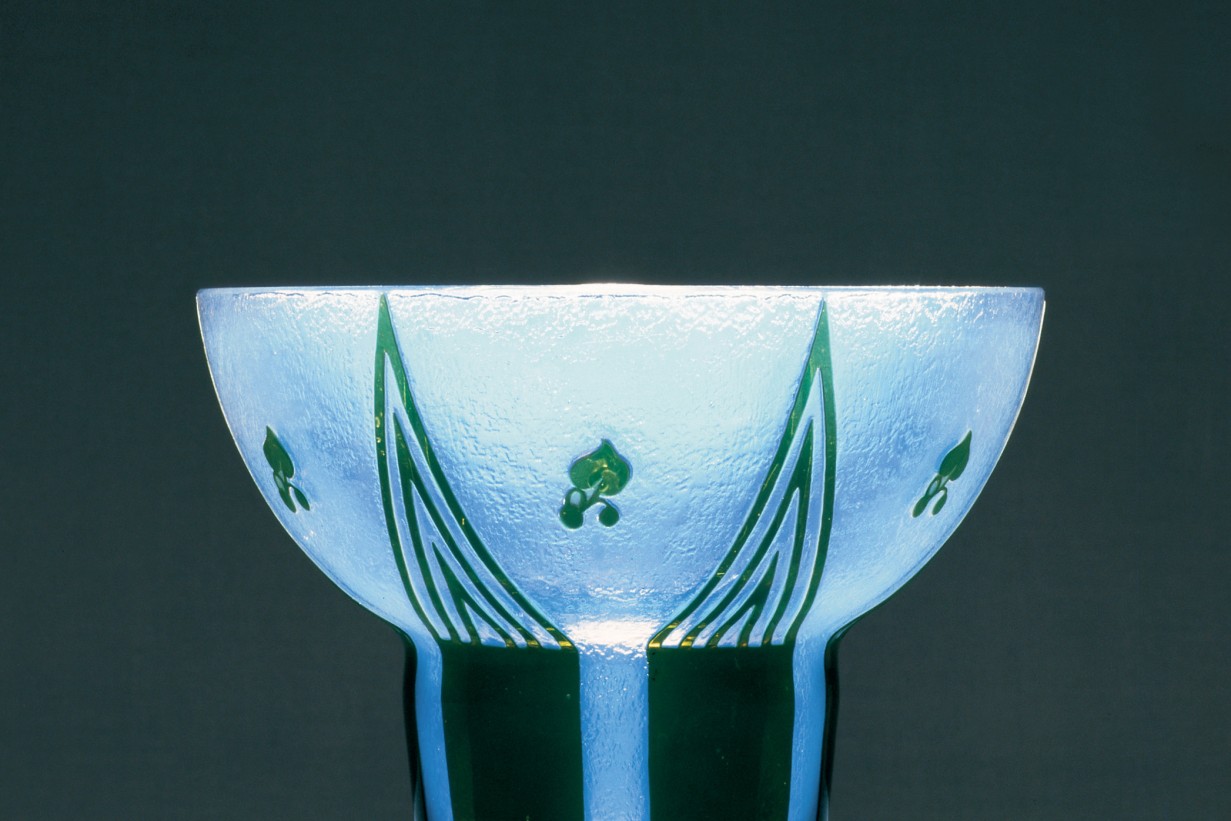
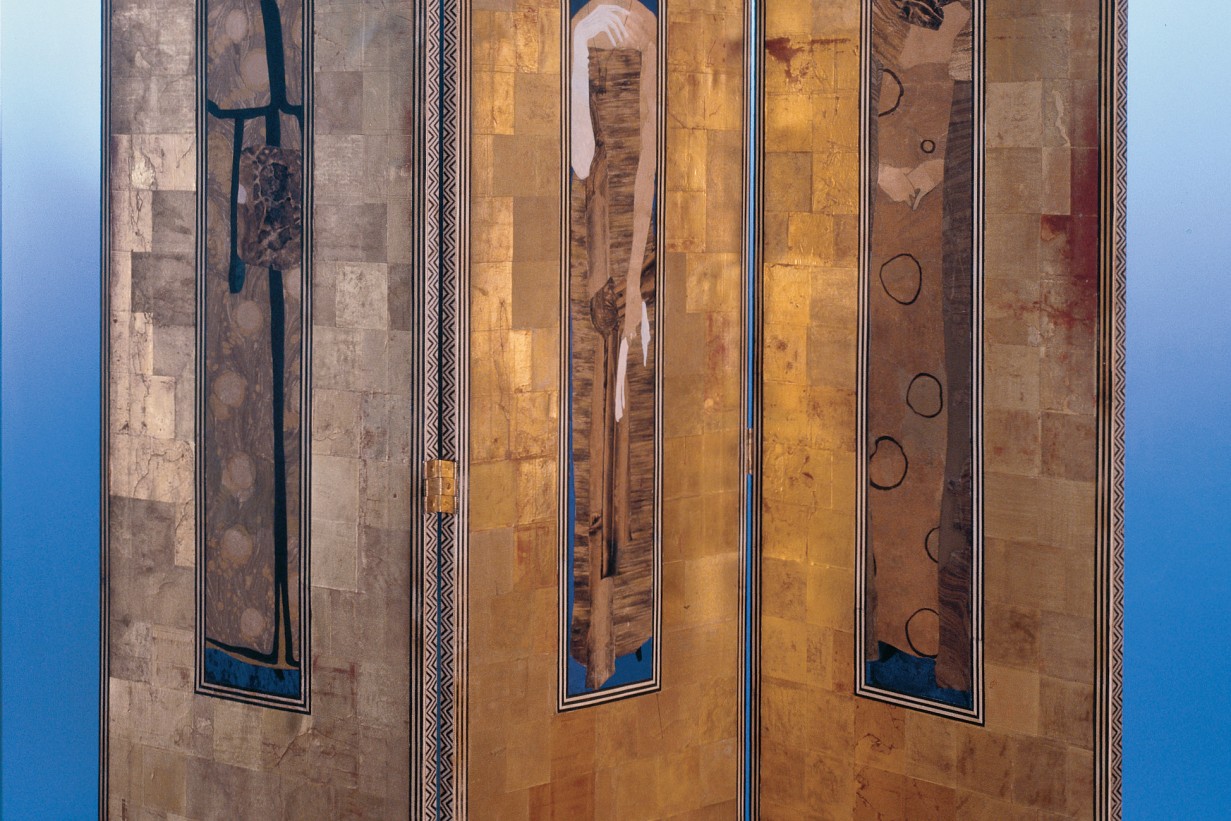
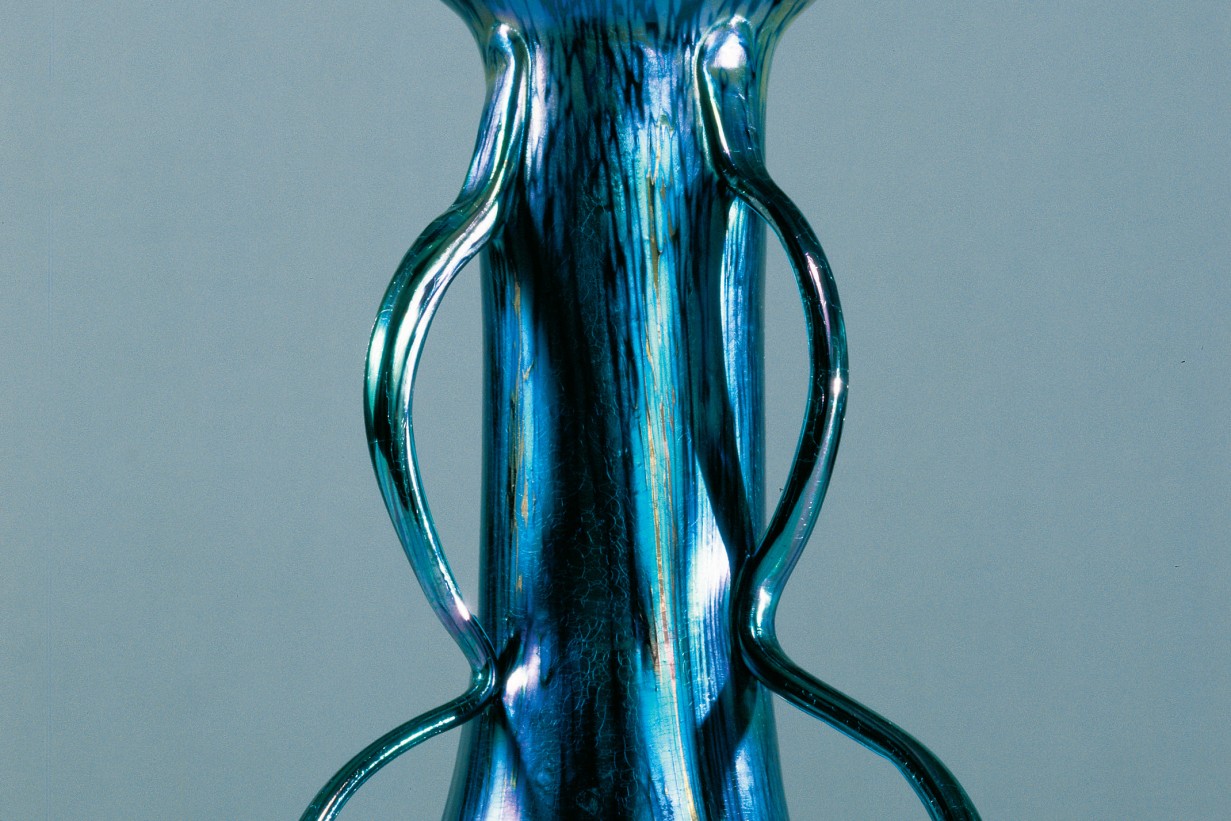
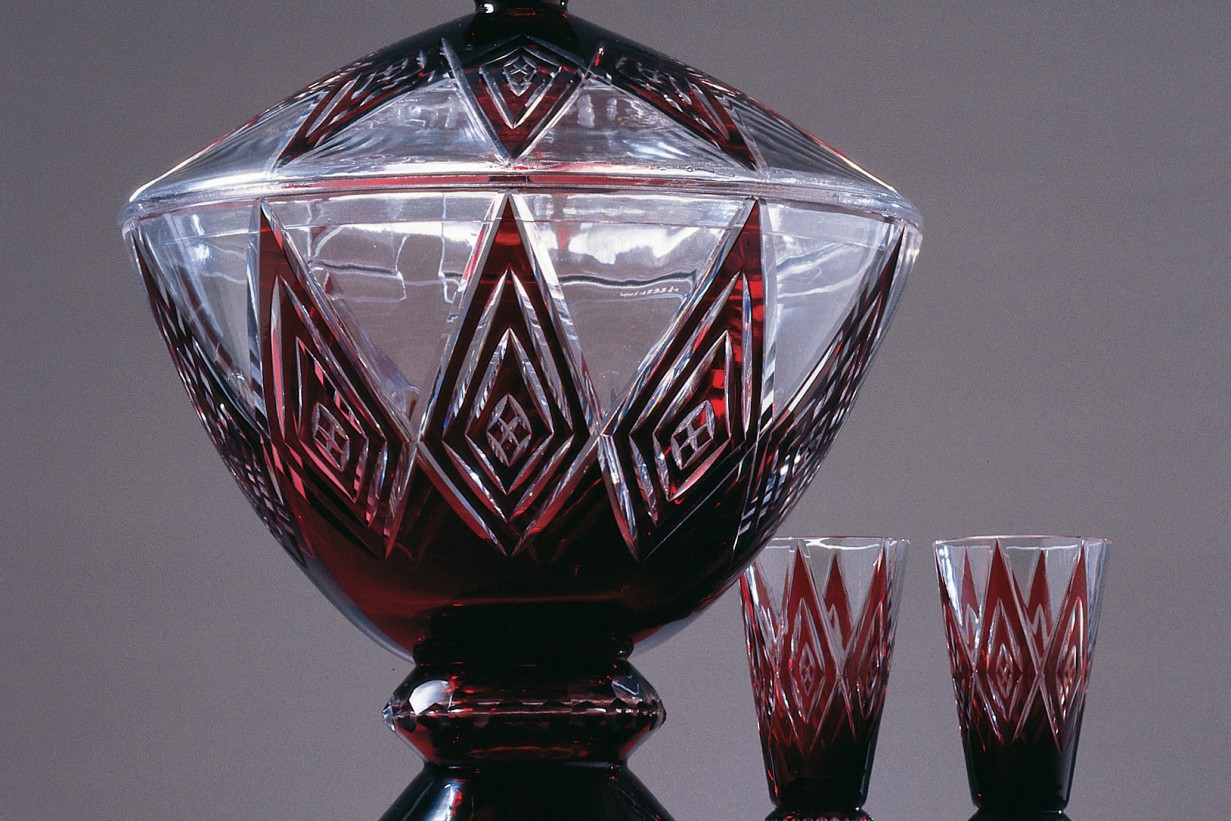
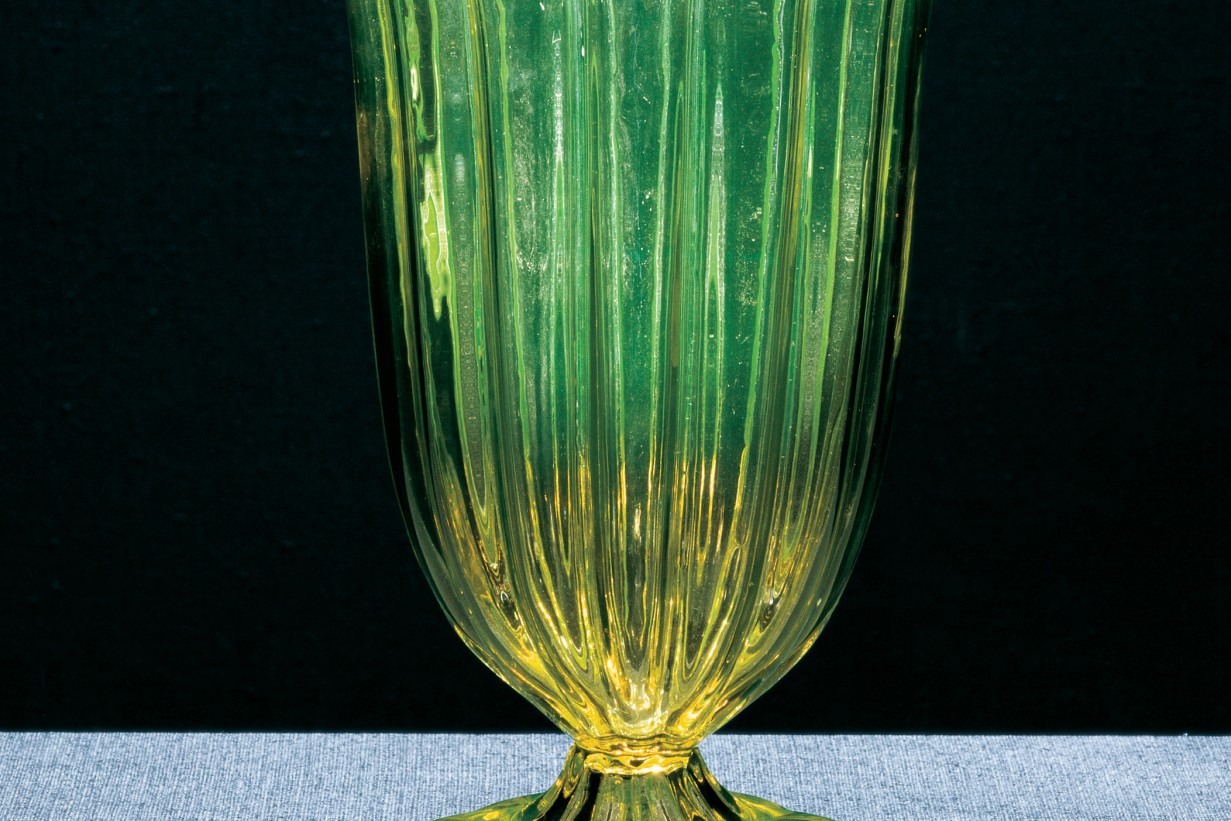
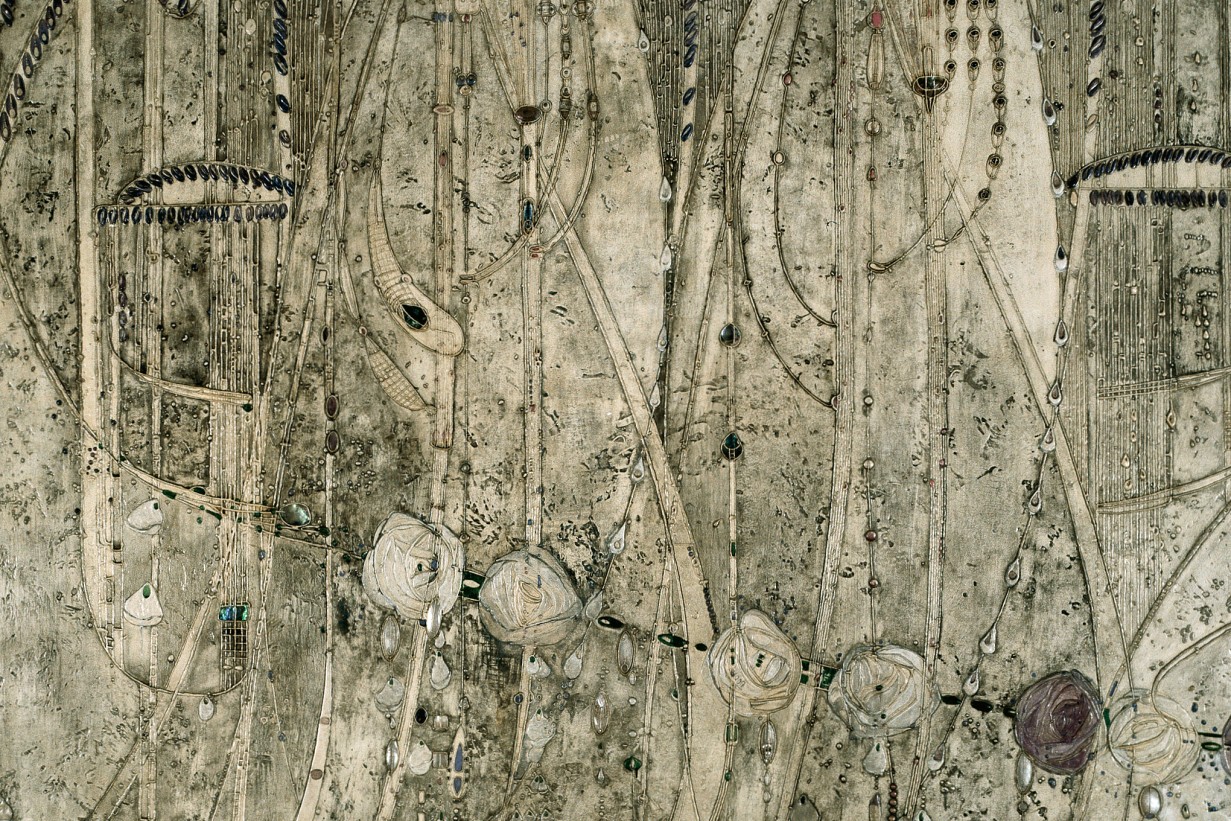
Previous Image
Permanent Collection space 1993–2012
Tradition klimt frieze, Macdonald frieze, furniture from 1895 to 1820, art nouveau glass and present day* a floating display case (23.38 meters long) the glass rooms (each 17.61 square meters) two cardboard walls (height 3.84 meters) the blue box (view downwards).
The diversity of the objects on display contrasts with the consistent treatment of the materials used: naturally colored corrugated card-board, sandblasted glass, display case lighting filtered by industrial drinking-glasses, a pre-cast concrete element, window frames, metal profiles, glass walls, the view from a wall niche down into the expanse of the exhibition room which was designed by Donald Judd.
The glass rooms: two logical spatial surfaces corresponding to the spatial whole. The existing invisible spaces were made visible through glass walls (12-mm securit float glass): size 4.35 meters by 4.26 meters and 4.05 meters high. The glass sheets, arranged in u-shapes, stretch from floor to ceiling. Each wall side is formed by three equal-sized single glass sheets. The entrance side consists of only two glass sheets leaving an asymmetrical entrance to these walk-in display cases. The three glass plates facing the entrance are sand-blasted to soften the light from the windows to the museum garden and the stubenring behind them. At varying intervals furniture by Krenn, Wimmer, Peche, Wagner, Breuer, Singer, Haerdtl, Frank, Hoffmann, Loos, Van de Velde will be shown.
The hanging display case: consisting of 6 (7) glass cases, each 3.34 meters long, arranged in a straight row. the display cases are hung from the ceiling with orni profiles and raise the colored glass objects that are displayed in them to eye level. An intermediate level of industrial glasses arranged in series serves as an ultraviolet filter and refractor for the light falling on the hanging display case from above. this shining cross-beam of glass and metal allows the pieces exhibited - art nouveau glassware and metalware - to be seen from three sides at once: from in front, behind and below.
The two cardboard walls are protective boxes for very fragile exhibits: Klimt’s Werkstätte sketches for the stoclet palace, and "the seven princesses,” a painted plaster relief with semiprecious stones by Margaret Macdonald. The cardboard walls emphasize an alternative relationship with raw materials: there is no difference in the handling of these materials verses other materials, and recycling and possible reuse ennobles the material so that even recyclable corrugated cardboard is taken seriously.
The blue box: a window of blue glass in an existing wall niche provides a view from above into the exhibition room, designed by Donald Judd. This small chapel is formed by a pedestal 30.7 meters high (precast concrete) and a standing, sand-blasted glass sheet. / Eichinger oder Knechtl
* "Tradition und Gegenwart, Bewahrung und Experiment" ["tradition and present day, conservation and experimentation"]: a sequence of excerpts from the press conference "transformation of a place” with the former director of the MAK (1986–2011), Peter Noever.
In 1902 Fritz Waerndorfer, co-founder and financier of the Wiener Werkstätte, commissioned Charles Rennie Mackintosh from Glasgow to install a music room in his Viennese villa, next to the dining room designed by Josef Hoffmann. Mackintosh‘s wife, Margaret Macdonald, designed the frieze for the salon using motifs of the Belgian poet Maurice Maeterlinck. Since 1916 the room‘s entire contents were thought to have been lost until the "Waerndorfer frieze" resurfaced during the Museum‘s reconstruction.
From 1905-9 Gustav Klimt worked on a frieze that was created for the Stoclet Palace in Brussels (architect: Josef Hoffmann). The frieze was commissioned by the Wiener Werkstätte, manufactured to Klimt‘s design by Leopold Forstner’s "Viennese Mosaic Factory” and installed in Brussels in 1911.
These works, which were commissioned by progressive art aficionados of the upper middle class illustrate the characteristics of the era: the Secession sought the dissolution of a hierarchical boundary between "free" and "applied" art. With prestigious objects, such as furniture, glass, and ceramics, non-industrial arts and crafts became an accepted part of private households. A programmatic equilibrium developed between the artist (design) and the craftsman (execution). The stylistic elements varied around Europe but the network of artists was closely knit.
"Art Nouveau represents the last attempt by art to escape from the ivory tower in which it is besieged by technology" (Walter Benjamin, 1935). Historicism lingers on in its desire for the synesthesia of the Gesamtkunstwerk; aesthetic comfort is forfeited and the modern movement is anticipated in the effort to find the proper form and adequate material. / Birgit Flos
Tradition klimt frieze, Macdonald frieze, furniture from 1895 to 1820, art nouveau glass and present day* a floating display case (23.38 meters long) the glass rooms (each 17.61 square meters) two cardboard walls (height 3.84 meters) the blue box (view downwards).
The diversity of the objects on display contrasts with the consistent treatment of the materials used: naturally colored corrugated card-board, sandblasted glass, display case lighting filtered by industrial drinking-glasses, a pre-cast concrete element, window frames, metal profiles, glass walls, the view from a wall niche down into the expanse of the exhibition room which was designed by Donald Judd.
The glass rooms: two logical spatial surfaces corresponding to the spatial whole. The existing invisible spaces were made visible through glass walls (12-mm securit float glass): size 4.35 meters by 4.26 meters and 4.05 meters high. The glass sheets, arranged in u-shapes, stretch from floor to ceiling. Each wall side is formed by three equal-sized single glass sheets. The entrance side consists of only two glass sheets leaving an asymmetrical entrance to these walk-in display cases. The three glass plates facing the entrance are sand-blasted to soften the light from the windows to the museum garden and the stubenring behind them. At varying intervals furniture by Krenn, Wimmer, Peche, Wagner, Breuer, Singer, Haerdtl, Frank, Hoffmann, Loos, Van de Velde will be shown.
The hanging display case: consisting of 6 (7) glass cases, each 3.34 meters long, arranged in a straight row. the display cases are hung from the ceiling with orni profiles and raise the colored glass objects that are displayed in them to eye level. An intermediate level of industrial glasses arranged in series serves as an ultraviolet filter and refractor for the light falling on the hanging display case from above. this shining cross-beam of glass and metal allows the pieces exhibited - art nouveau glassware and metalware - to be seen from three sides at once: from in front, behind and below.
The two cardboard walls are protective boxes for very fragile exhibits: Klimt’s Werkstätte sketches for the stoclet palace, and "the seven princesses,” a painted plaster relief with semiprecious stones by Margaret Macdonald. The cardboard walls emphasize an alternative relationship with raw materials: there is no difference in the handling of these materials verses other materials, and recycling and possible reuse ennobles the material so that even recyclable corrugated cardboard is taken seriously.
The blue box: a window of blue glass in an existing wall niche provides a view from above into the exhibition room, designed by Donald Judd. This small chapel is formed by a pedestal 30.7 meters high (precast concrete) and a standing, sand-blasted glass sheet. / Eichinger oder Knechtl
* "Tradition und Gegenwart, Bewahrung und Experiment" ["tradition and present day, conservation and experimentation"]: a sequence of excerpts from the press conference "transformation of a place” with the former director of the MAK (1986–2011), Peter Noever.
In 1902 Fritz Waerndorfer, co-founder and financier of the Wiener Werkstätte, commissioned Charles Rennie Mackintosh from Glasgow to install a music room in his Viennese villa, next to the dining room designed by Josef Hoffmann. Mackintosh‘s wife, Margaret Macdonald, designed the frieze for the salon using motifs of the Belgian poet Maurice Maeterlinck. Since 1916 the room‘s entire contents were thought to have been lost until the "Waerndorfer frieze" resurfaced during the Museum‘s reconstruction.
From 1905-9 Gustav Klimt worked on a frieze that was created for the Stoclet Palace in Brussels (architect: Josef Hoffmann). The frieze was commissioned by the Wiener Werkstätte, manufactured to Klimt‘s design by Leopold Forstner’s "Viennese Mosaic Factory” and installed in Brussels in 1911.
These works, which were commissioned by progressive art aficionados of the upper middle class illustrate the characteristics of the era: the Secession sought the dissolution of a hierarchical boundary between "free" and "applied" art. With prestigious objects, such as furniture, glass, and ceramics, non-industrial arts and crafts became an accepted part of private households. A programmatic equilibrium developed between the artist (design) and the craftsman (execution). The stylistic elements varied around Europe but the network of artists was closely knit.
"Art Nouveau represents the last attempt by art to escape from the ivory tower in which it is besieged by technology" (Walter Benjamin, 1935). Historicism lingers on in its desire for the synesthesia of the Gesamtkunstwerk; aesthetic comfort is forfeited and the modern movement is anticipated in the effort to find the proper form and adequate material. / Birgit Flos
Media
GUSTAV KLIMT, STOCLET FRIEZE
Vienna, 1905-12
Design: Gustav Klimt; Drawing in 9 pieces for the mosaic at the Stoclet Palace in Brussels; gold leaf and silver leaf on wrapping paper of various thicknesses, with a grid and various manuscript markings
Mal 226a-i/1961
GUSTAV KLIMT, STOCLET FRIEZE (detail)
Vienna, 1905-12
Part 6: Tree of Life with rosebush
Various manuscript markings: "6. Teil von links" ["6th part from left"] and notes: "Blüthe nicht Mosaik Stengel Mosaik. Schmetterlinge nicht Mosaik anderes noch zu bestimmendes Material Strauch samt Blumen und Stiel nicht Mosaik sondern anderes Material S" ["Flowers not mosaic stem mosaic. Butterflies not mosaic other material still to be decided. Bush with flowers and stalk not mosaic but other material S"]
Mal 226a-i/1961
SLIDING TABLE
Vienna, 1903
Design: Koloman Moser, manufacture: Caspar Hrazdil (?) Maple wood, natural and with dark stain, solid and veneered; nickel fittings
H 2630/1981
Donation of Gertrud von Webern
ARMCHAIR
Vienna, 1927
Design: Franz Singer
Maple, solid, natural and with brown stain, beechwood panelling; painted red; strips
H 3004/1989
ORNAMENTAL CUPBOARD
Vienna, 1912
Design: Rosa Krenn; manufacture: Karl Adolf Franz (marquetry work), Florian Hrabal (cabinetmaking)
Zebrawood and black-stained maple wood, veneered; marquetry in zebrawood, amaranth, and maple wood; brass fittings
H 1397/1912
BOWL
ca. 1913
Design: Josef Hoffmann
Bluish opal-colored glass with green verre doublé, cut decoration on raw-etched ground
W.I. 1594/1915
SCREEN
1906
Design: Koloman Moser, manufacture: Karl Beitl, Therese Trethan, produced in the Wiener Werkstätte; Gold leaf, paper collage, on wooden frame
WWPA 830/1995
Donation of Tokyo Shimbun
VASE
ca. 1900
Three double-curved handles
Mark: "Loetz Austria" (engraved)
W.I. 15/1902
Donation of Max Ritter von Spaun
PIECES FROM A PUNCH BOWL SET
Prague, before 1915
Design: Josef Rosipal for Arte`´l
Glass with verre doublé, cut decoration on raw-etched ground
W 1523/1, 3-5/1915
VASE
Design: Josef Hoffmann, ca. 1923
manufacture: commissioned by the Wiener Werkstätte, probably in Bohemia (1923-28, around 400 pieces in various designs); Model number: va 35 (not marked)
Gl 3311/1972

